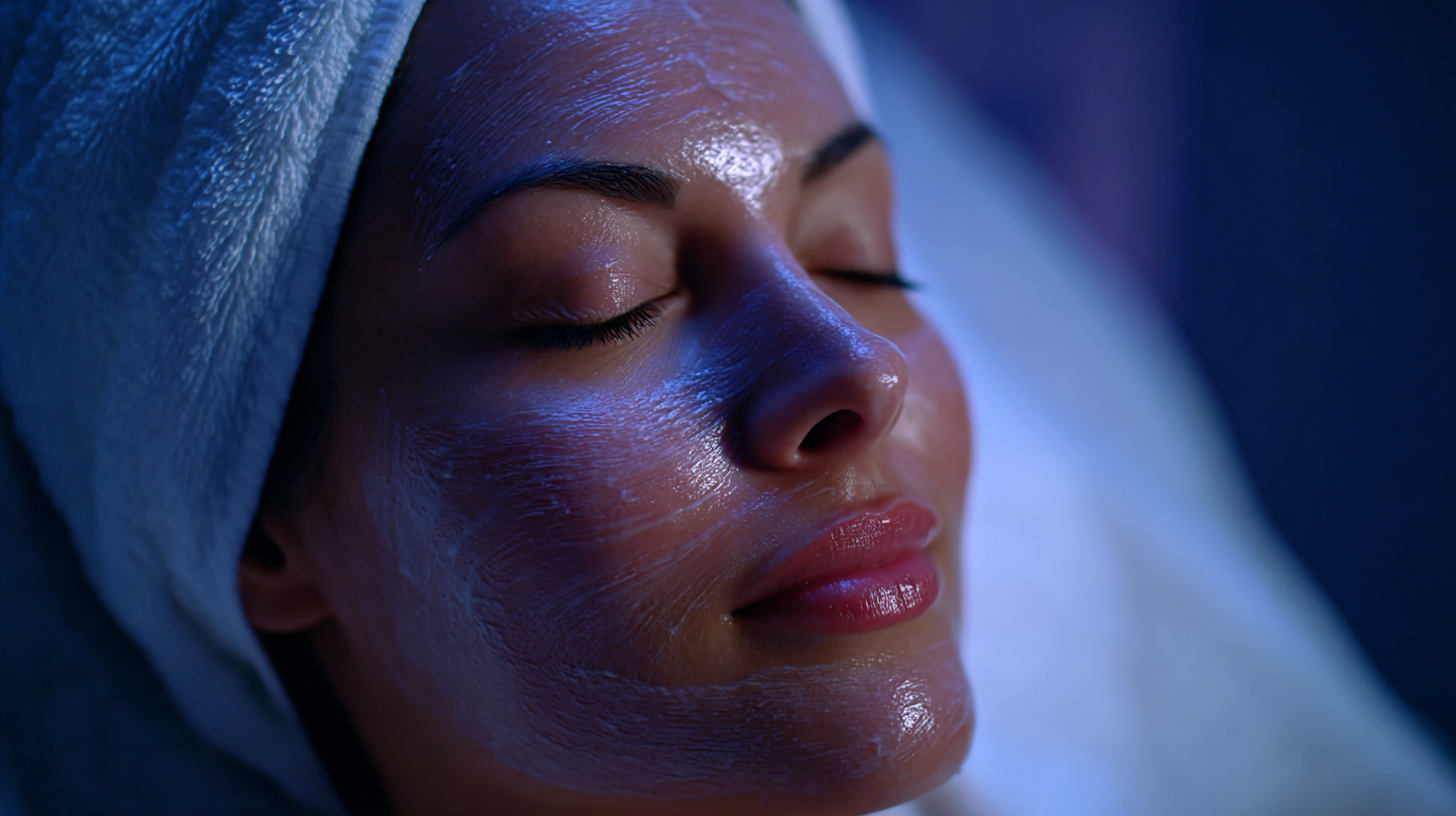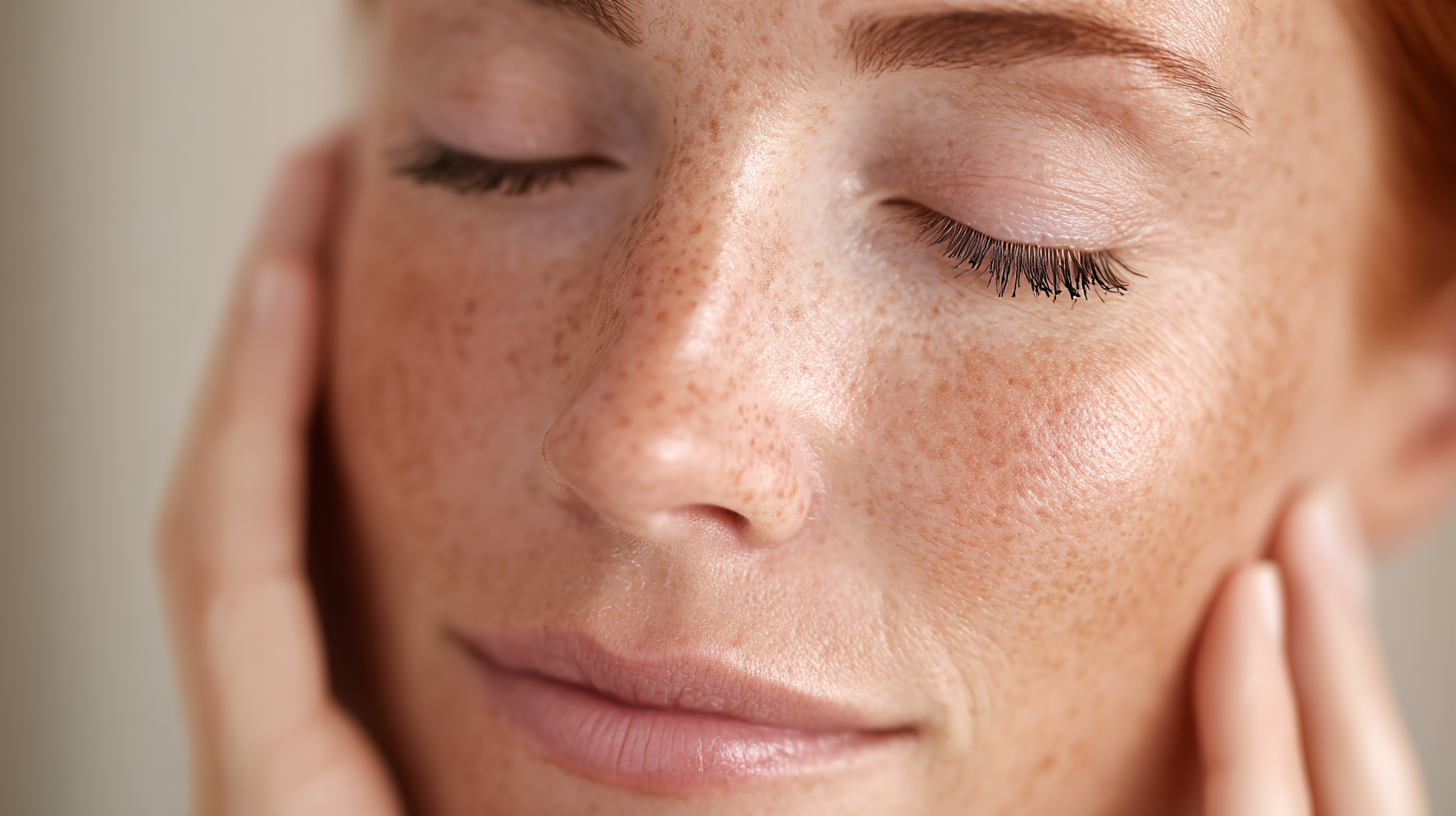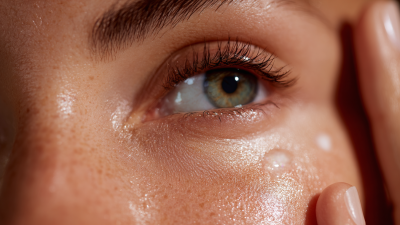![]() 3606 E. Chapman Ave, Orange, CA 92869
3606 E. Chapman Ave, Orange, CA 92869
![]() Contact us: 714-743-4914
Contact us: 714-743-4914
![]() 3606 E. Chapman Ave, Orange, CA 92869
3606 E. Chapman Ave, Orange, CA 92869
![]() Contact us: 714-743-4914
Contact us: 714-743-4914
Understanding the Benefits of Skin Peels for Your Skincare Routine
 Skin peels have emerged as a transformative element in modern skincare routines, offering a myriad of benefits for diverse skin types. According to a report by the American Society for Aesthetic Plastic Surgery, over 1.3 million chemical peel procedures were performed in the United States in 2020 alone, highlighting the growing popularity and effectiveness of this skincare treatment.
Skin peels work by exfoliating the outer layers of the skin, promoting cell turnover and revealing a brighter, more youthful complexion. Clinical studies also indicate that regular skin peels can improve the appearance of acne scars, fine lines, and hyperpigmentation, making them a valuable addition to any skincare regimen.
With the right application and guidance, skin peels can enhance skin health and contribute to a more radiant appearance, providing both immediate and long-term results for users. As consumer demand for effective skincare solutions continues to rise, understanding the benefits of skin peels becomes increasingly essential for anyone looking to elevate their skincare routine.
Skin peels have emerged as a transformative element in modern skincare routines, offering a myriad of benefits for diverse skin types. According to a report by the American Society for Aesthetic Plastic Surgery, over 1.3 million chemical peel procedures were performed in the United States in 2020 alone, highlighting the growing popularity and effectiveness of this skincare treatment.
Skin peels work by exfoliating the outer layers of the skin, promoting cell turnover and revealing a brighter, more youthful complexion. Clinical studies also indicate that regular skin peels can improve the appearance of acne scars, fine lines, and hyperpigmentation, making them a valuable addition to any skincare regimen.
With the right application and guidance, skin peels can enhance skin health and contribute to a more radiant appearance, providing both immediate and long-term results for users. As consumer demand for effective skincare solutions continues to rise, understanding the benefits of skin peels becomes increasingly essential for anyone looking to elevate their skincare routine.
The Science Behind Skin Peels: How They Work on a Cellular Level
Skin peels are a popular skincare treatment that works by exfoliating the outer layers of skin, promoting cell turnover, and revealing fresher, healthier skin beneath. On a cellular level, skin peels utilize chemical agents such as alpha hydroxy acids (AHAs), beta hydroxy acids (BHAs), and trichloroacetic acid (TCA) to dissolve the bonds between dead skin cells. This process helps slough off the dull, damaged top layer, allowing new skin cells to surface, which can improve texture, tone, and overall appearance.
The effectiveness of skin peels also extends to deeper layers of the skin where they stimulate collagen production. Increased collagen levels contribute to skin elasticity and firmness, helping to reduce the appearance of fine lines and wrinkles. Additionally, skin peels can target specific concerns like hyperpigmentation and acne by unclogging pores and reducing the buildup of keratin, which often leads to breakouts. As a result, incorporating skin peels into a skincare routine can not only refresh the skin's surface but also enhance its overall health and resilience on a cellular level.
Understanding the Benefits of Skin Peels for Your Skincare Routine - The Science Behind Skin Peels: How They Work on a Cellular Level
| Type of Peel | Active Ingredients | Benefits | Suitable Skin Types | Recovery Time |
|---|---|---|---|---|
| Superficial Peel | Glycolic Acid, Salicylic Acid | Improves texture, brightens skin, minimizes fine lines | All skin types, especially oily and acne-prone | Minimal to none, same day |
| Medium Peel | Trichloroacetic Acid (TCA) | Addresses deeper wrinkles, treats sun damage and uneven pigmentation | Normal to dry skin | 5 to 7 days |
| Deep Peel | Phenol | Significantly reduces deep wrinkles, removes pre-cancerous growths | Mature skin, sun-damaged skin | 2 weeks or more |
| Enzyme Peel | Papain, Bromelain | Gently exfoliates, improves skin clarity | Sensitive skin, dry skin | No recovery time |
Types of Skin Peels: A Comprehensive Overview of Chemical, Enzymatic, and Mechanical Options
When considering skin peels for your skincare routine, it's crucial to understand the different options available. Chemical peels use various acids to exfoliate the skin on a deeper level, addressing issues like acne and hyperpigmentation. The strength of the chemical peel can vary, allowing for tailored treatments. Enzymatic peels, on the other hand, utilize natural enzymes to gently dissolve dead skin without irritation, making them ideal for sensitive skin types. Lastly, mechanical peels involve physical exfoliation methods, such as microdermabrasion, which effectively remove the outer layer of dead skin cells.
Tips for a successful skin peel: Always consult a skincare professional to identify the best type of peel for your skin concerns. Start with a patch test, especially for chemical and enzymatic peels, to assess how your skin reacts. Post-peel care is essential; ensure you use a gentle cleanser and apply a broad-spectrum sunscreen to protect your newly treated skin from UV damage.
For those with busy lifestyles, consider at-home enzymatic peels that can be incorporated easily into your weekly routine. They offer a convenient way to maintain skin texture and brightness without the downtime associated with stronger chemical peels.
Expected Results: Peeling Potency and Average Recovery Times by Peel Type
When considering skin peels for your skincare routine, understanding the expected results along with peeling potency and average recovery times by peel type is crucial.
Chemical peels can be categorized primarily into three types: superficial, medium, and deep peels.
According to the American Society of Plastic Surgeons, superficial peels, which utilize milder acids such as glycolic or salicylic acid, typically require minimal downtime, with recovery generally taking just a few days.
Users can expect improvements in skin texture and tone, often seeing results within one to two weeks post-treatment.
Medium peels, often involving trichloroacetic acid (TCA), penetrate deeper and may cause more pronounced peeling. The average recovery time for medium peels is about one to two weeks.
Patients might experience redness, swelling, and flaking, alongside significant enhancements in skin firmness and the reduction of fine lines.
A report by the American Academy of Dermatology revealed that over 70% of patients experience notable improvements in their skin’s appearance following medium peels.
Deep peels, which use phenol, offer the most intense treatments with the longest recovery times, often ranging from two to four weeks.
While the results can be dramatic, bringing about significant lifting and rejuvenation, they also require a more extensive recovery period, including careful post-care to prevent complications.
Research shows that 90% of patients report satisfaction with their outcomes, underscoring the effectiveness of tailored peel treatments in achieving desired skin rejuvenation.
The Role of pH Levels in Skin Peel Efficacy: Understanding Acid Concentrations
The effectiveness of skin peels is significantly influenced by pH levels and acid concentrations. A study published in the Journal of Dermatological Treatment highlights that the ideal pH range for superficial peels is between 2.5 and 3.5. At this acidic level, alpha hydroxy acids (AHAs) and beta hydroxy acids (BHAs) penetrate the skin effectively, facilitating exfoliation and enhancing cellular turnover. Moreover, proper acid concentrations, typically between 20% to 30% for AHAs, optimize the peel's efficacy while minimizing irritation, allowing users to achieve vivid results without the risk of adverse effects.

Tips for achieving the best results with skin peels include selecting the right product for your skin type. For sensitive skin, look for peels with lower acid concentrations and higher pH levels to reduce irritation. Additionally, always conduct a patch test before committing to a full peel, and ensure that you prepare your skin properly by cleansing and exfoliating beforehand. It is also critical to incorporate post-peel care, such as the use of broad-spectrum sunscreen, as skin can be particularly sensitive to UV exposure after treatment.
Clinical Studies: Statistical Outcomes of Skin Peel Treatments on Acne and Hyperpigmentation
Clinical studies have revealed substantial evidence supporting the efficacy of skin peel treatments for addressing issues like acne and hyperpigmentation. In various clinical trials, participants receiving chemical peels showed a significant reduction in acne lesions and inflammation compared to those who did not undergo the treatment. One study reported a 50-70% improvement in acne severity after multiple sessions of salicylic acid peels. These outcomes highlight the potential of skin peels not just for exfoliation, but as a targeted therapeutic approach for persistent acne conditions.
Moreover, skin peels have shown promise in treating hyperpigmentation, with studies demonstrating noticeable improvements in skin tone and texture. For instance, a clinical trial utilizing glycolic acid peels indicated a 60% reduction in hyperpigmented areas after a series of treatments over several weeks. Participants reported not only a more even complexion but also enhanced overall skin clarity. These statistical outcomes underscore the role of skin peels as an effective option in the skincare routine, particularly for those struggling with acne-related scars and uneven pigmentation.

Related Posts
-

Unlock Radiant Skin with the Ultimate Guide to Facial Peels for Every Skin Type
-

Understanding the Factors Influencing Chemical Peel Cost for Optimal Skin Health
-

Understanding Your Skin Type: The Key to Personalized Skincare Solutions
-

Unlock the Secrets of Your Skincare Routine: Transform Your Skin Today!
-

Unlock Radiance: The Ultimate Guide to Glow Skin Care for a Luminous Complexion
-

Revolutionizing Your Beauty Routine with Advanced Skin Care Techniques for Glowing Skin

